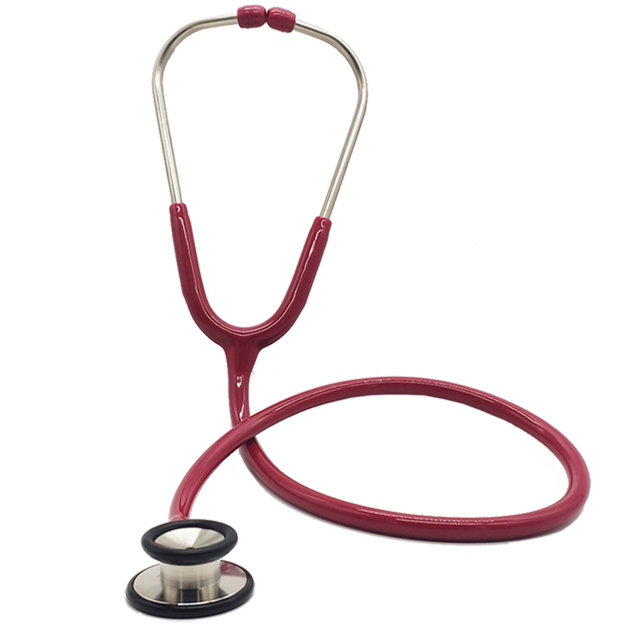Introduction to Stethoscopes: Past and Present
Stethoscopes, a staple in the medical profession, have been around since the 19th century when they were first invented by René Laennec. These instruments have become synonymous with healthcare, playing a crucial role in diagnosing heart, lung, and other bodily sounds. The traditional stethoscope relies on acoustic principles, whilst today's Digital Stethoscopes are a product of advancing technology, offering enhanced functionalities and diagnostic capabilities. As we navigate through the digital age, understanding the differences between these two stethoscope types is key to improving patient care.
Understanding Traditional Stethoscope Mechanics
● Acoustic Principles
Traditional stethoscopes function on the basis of simple acoustic principles. Sound waves are transmitted from the chest piece through air-filled hollow tubes to the ear of the listener. The diaphragm captures high-frequency sounds, while the bell picks up low-frequency sounds, allowing clinicians to detect a range of heart and lung sounds. Despite their simplicity, they remain effective in the hands of skilled practitioners.
● Limitations in Noisy Settings
However, the traditional stethoscope has its limitations. Environmental noises can interfere with the listening experience, sometimes making it difficult to discern important diagnostic sounds. This can be especially challenging in chaotic emergency rooms or bustling hospital wards. Moreover, their reliance on the practitioner's auditory acuity means that any hearing impairments can potentially compromise diagnostic accuracy.
Technology Behind Digital Stethoscopes
● Conversion of Sound Waves
Digital stethoscopes represent a significant leap forward, converting analog sound waves into electrical signals. This conversion allows the sound to be amplified, filtered, and sometimes recorded. Such features can assist in more accurate diagnoses, as faint murmurs or aberrant heart rhythms are less likely to be missed.
● Electrical Signal Processing
Advanced models, including Custom Digital Stethoscopes, leverage sophisticated signal processing algorithms to enhance sound quality and reduce ambient noise. This capability is particularly beneficial in noisy environments, enabling clearer auscultation even in less-than-ideal circumstances. Digital stethoscope manufacturers are continuously refining these processes to meet the demands of modern healthcare.
Sound Quality and Clarity Comparison
● Enhanced Sound in Digital Models
Digital stethoscopes, like those produced by leading Digital Stethoscope suppliers, offer superior sound quality compared to their traditional counterparts. By amplifying and processing sounds electronically, these devices can reveal fainter heart murmurs and lung crackles that may not be audible with a traditional stethoscope. For clinicians, this means a higher likelihood of accurate and early detection of health issues.
● Traditional Acoustic Fidelity
Despite the advances in digital technology, some practitioners remain loyal to traditional stethoscopes. Their acoustic fidelity and low cost make them a practical choice, especially when digital enhancements are not necessary. Furthermore, their simplicity and reliability are valued in settings where technological devices might face compatibility issues or require maintenance.
Portability and Power Requirements
● Battery and Recharging Needs
One of the notable differences between traditional and digital stethoscopes is the need for power. Digital stethoscopes, particularly those from OEM Digital Stethoscope factories, require batteries or recharging. This need for power can be a downside in remote areas or situations where electricity is unreliable.
● Traditional Convenience Without Power
Traditional stethoscopes, on the other hand, do not rely on power sources, offering unparalleled portability and convenience. Their lightweight and robust nature make them ideal for fieldwork or challenging environments, where durability and simplicity are essential.
Cost Implications and Accessibility
● Price Differences Between Models
Cost is a significant consideration when comparing digital and traditional stethoscopes. Digital models, including ODM Digital Stethoscopes, tend to be more expensive due to their advanced technology and capabilities. This can be a deterrent for some healthcare providers, particularly those in low-resource settings.
● Accessibility Concerns for Healthcare Providers
While traditional stethoscopes are widely accessible and affordable, digital versions are not always financially feasible for everyone. This disparity can affect healthcare delivery, as some providers may not have access to the enhanced diagnostic capabilities that digital stethoscopes offer.
User Experience and Learning Curve
● Ease of Use for Practitioners
Digital stethoscopes can be more complex to use than traditional models, requiring practitioners to familiarize themselves with digital interfaces and settings. This learning curve varies depending on the specific model and its features.
● Training Required for Digital Devices
To fully utilize the capabilities of digital stethoscopes, training is often required. This includes understanding how to interpret digitally enhanced sounds and how to use connectivity features effectively. Manufacturers often provide training resources to facilitate this transition in clinical practice.
Impact on Diagnostic Accuracy
● Potential for Improved Diagnostics
Digital stethoscopes have the potential to improve diagnostic accuracy significantly. Their ability to amplify sounds and filter out ambient noise allows for better detection of subtle abnormalities in cardiac and respiratory sounds. This capability is particularly valuable in complex cases or when dealing with patients presenting ambiguous symptoms.
● Challenges of Relying Solely on Technology
However, relying solely on digital enhancements poses its challenges. There is a risk of becoming overly dependent on technology at the expense of developing critical listening skills. Thus, integrating digital tools with traditional auscultation skills is essential to ensure comprehensive patient assessments.
Integration with Medical Technologies
● Compatibility with Other Devices
Modern healthcare increasingly relies on the integration of various medical devices. Wholesale Digital Stethoscopes often come with features that allow them to connect with smartphones and computers, enabling the storage and sharing of auscultation data. This interoperability is crucial for creating seamless workflows and enhancing collaborative patient care.
● Data Recording and Sharing Capabilities
Digital stethoscopes, particularly those from leading Digital Stethoscope factories, offer data recording and sharing capabilities. This feature allows physicians to track changes in patients' conditions over time and facilitates consultations with specialists. The ability to share precise audio recordings can improve diagnostic accuracy and patient outcomes.
Conclusion: Choosing the Right Tool for the Job
● Weighing Pros and Cons
When choosing between digital and traditional stethoscopes, healthcare providers must weigh the pros and cons. While digital models offer advanced features that enhance diagnostic capabilities, traditional stethoscopes provide reliability and cost-effectiveness. The decision ultimately depends on the specific needs of the practitioner and the healthcare setting.
● Future of Stethoscopes in Healthcare
As technology continues to evolve, the future of stethoscopes looks promising. Innovations in digital auscultation tools will likely continue, offering even more refined diagnostics and integration capabilities. However, traditional stethoscopes will remain a valuable tool, especially in regions where digital access is limited.
About Leis
Leis is a leading and fast-growing medical supplier dedicated to researching, designing, developing, manufacturing, and marketing medical devices. With a highly experienced team, Leis is committed to providing high-quality products and excellent service for families and hospitals. Leis offers a wide range of medical products, including home-care instruments, diagnostic equipment, and disposable medical consumables. Operating under stringent quality standards, Leis ensures products are ISO13485 certified and CE approved, upholding a strong reputation in the medical industry.

